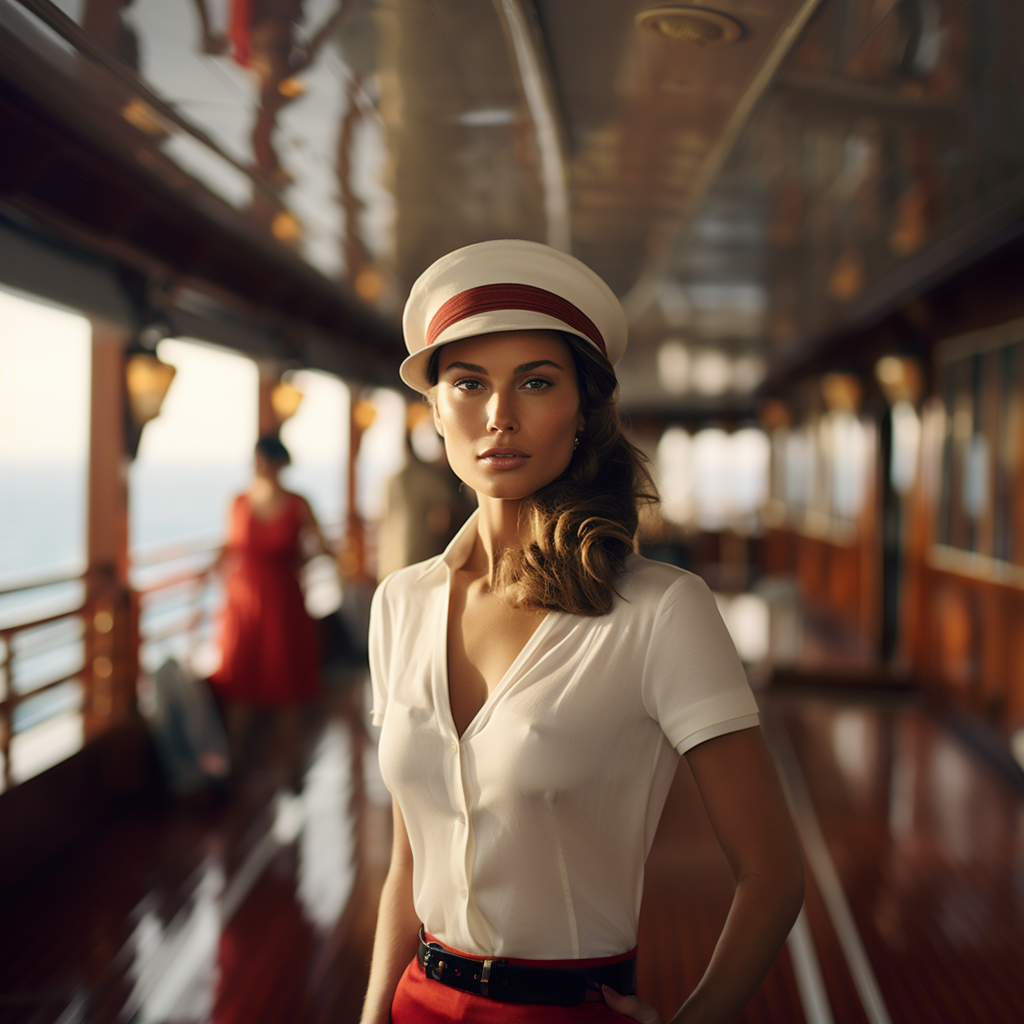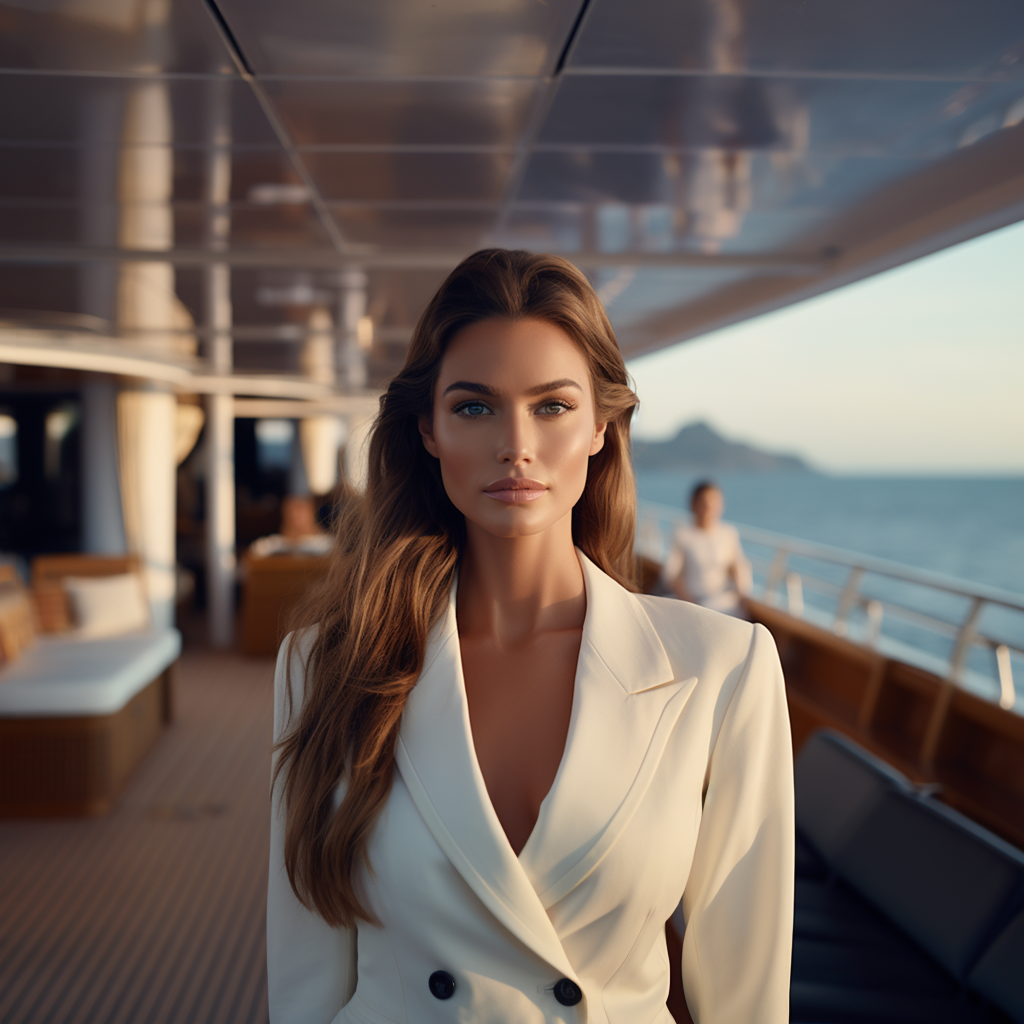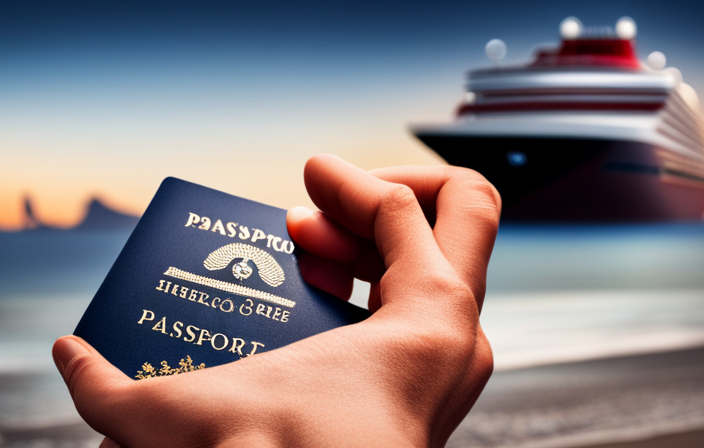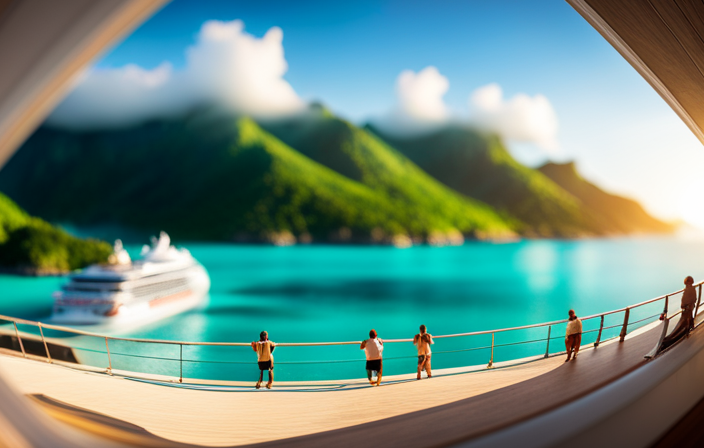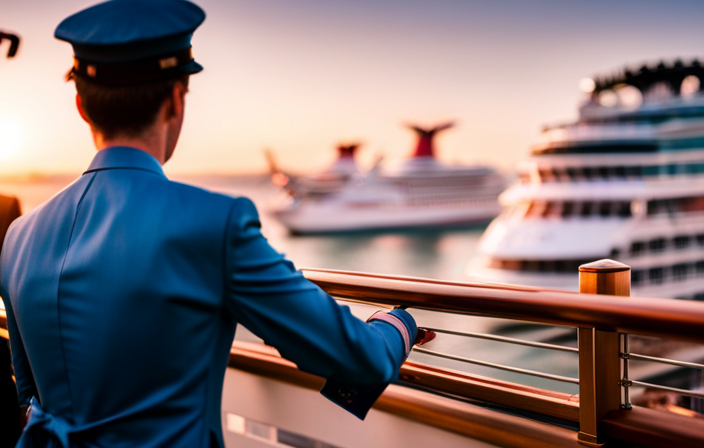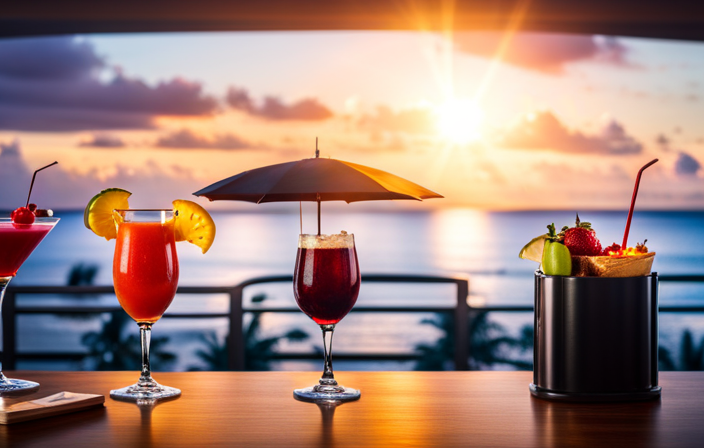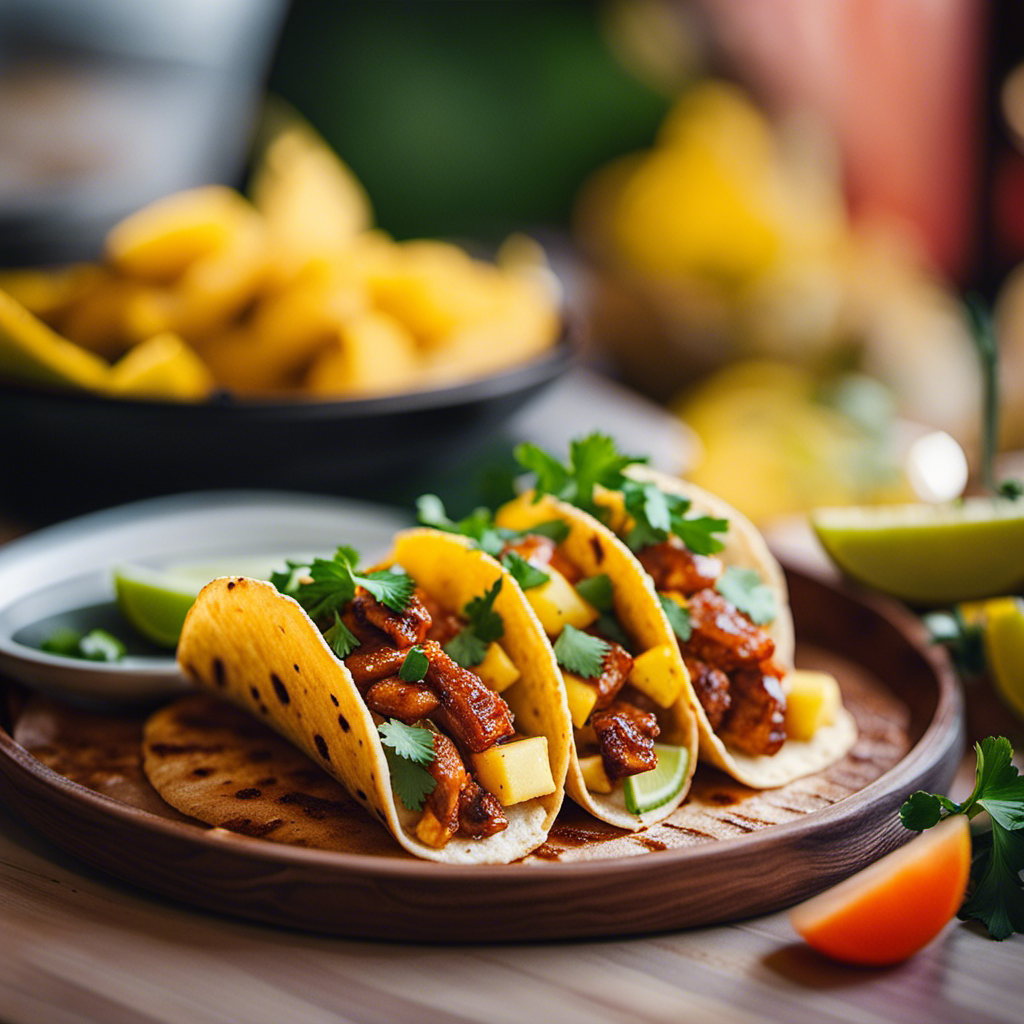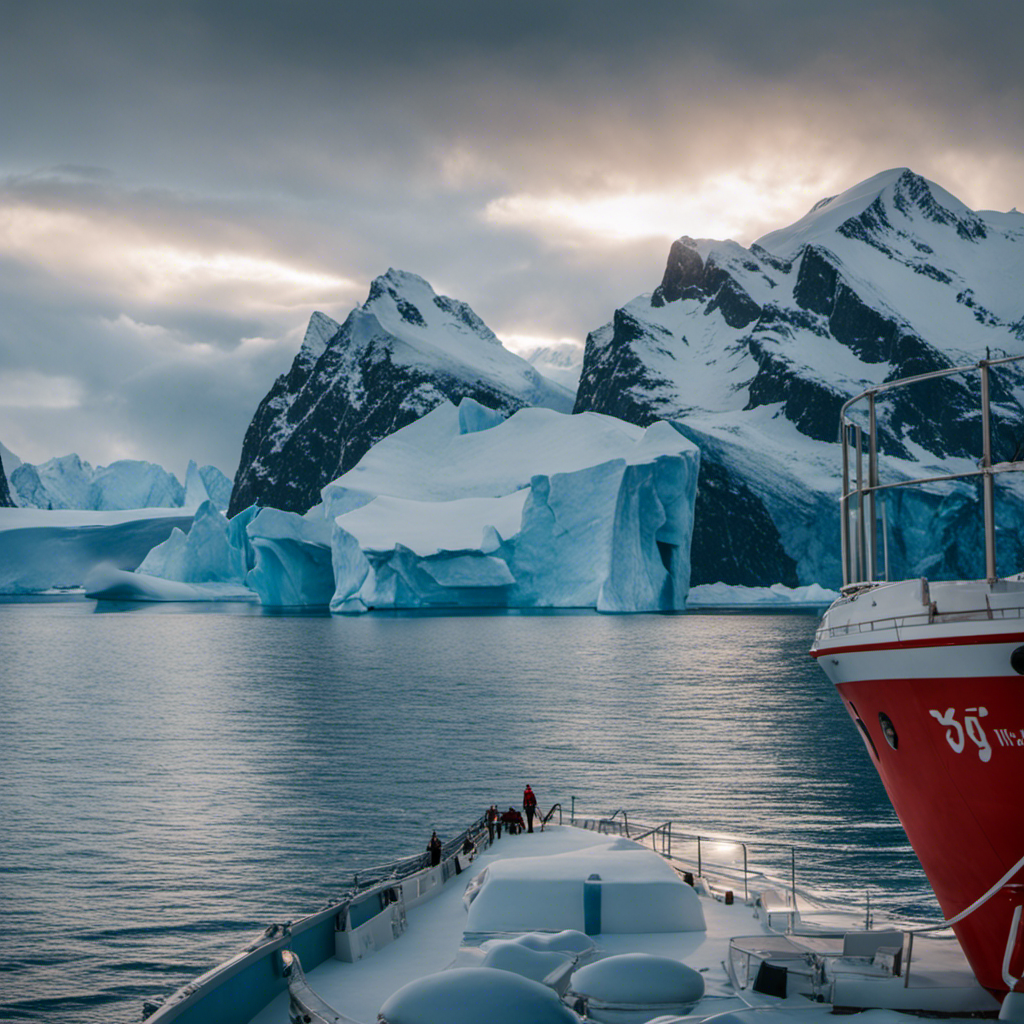Cruise FAQs
Why Don’t Cruise Ships Sink

As I stand on the deck of the cruise ship, gazing out across the vast expanse of the ocean, I am filled with wonder and intrigue. How is it that this huge vessel, carrying thousands of passengers and a vast amount of cargo, stays afloat despite the immense weight and force of the sea?
The answer lies in the remarkable principle of buoyancy. Cruise ships are meticulously designed and constructed to ensure their stability and safety at sea.
From advanced navigation systems to sophisticated ballast systems, every aspect is carefully engineered to prevent sinking. International maritime regulations and standards further enhance the security measures, while weather monitoring and emergency preparedness play vital roles in preventing disaster.
And let us not forget the crucial role of passenger and crew safety measures, meticulously put in place to ensure the well-being of everyone on board.
So, join me on a journey as we explore the fascinating world of cruise ship engineering and uncover the secrets behind why these magnificent vessels don’t sink.
Key Takeaways
- Ballast tank operations play a crucial role in maintaining the stability of cruise ships, preventing capsizing, and ensuring safe navigation.
- Regular inspections and maintenance help identify potential issues that could compromise the ship’s stability and mitigate risks.
- International maritime regulations and standards establish guidelines for construction, operation, and maintenance, ensuring compliance and preventing accidents.
- Weather monitoring and response, along with emergency preparedness and evacuation procedures, prioritize passenger safety and minimize risks during unforeseen circumstances.
The Principle of Buoyancy
You may be wondering, ‘Why don’t cruise ships sink?’ Well, let me explain to you the fascinating principle of buoyancy.
The principle of buoyancy, also known as Archimedes’ principle, states that an object immersed in a fluid experiences an upward force equal to the weight of the fluid displaced by the object. In other words, as long as the weight of the water displaced by the ship is equal to or greater than the weight of the ship itself, it will float.
This is achieved through the design and construction of cruise ships, which are carefully engineered to displace a large volume of water. By incorporating watertight compartments and using materials with low density, cruise ships are able to remain buoyant and stay afloat.
Now, let’s delve into the design and construction of cruise ships, which further enhances their ability to remain stable on the water.
Design and Construction of Cruise Ships
The design and construction of cruise ships is a fascinating process that involves meticulous craftsmanship and engineering. Cruise ship architecture plays a crucial role in ensuring the ship’s stability and safety. These massive vessels are carefully designed with specific dimensions to optimize buoyancy and stability. The shipbuilding industry faces various challenges in constructing these behemoths, including maintaining structural integrity, managing weight distribution, and incorporating advanced technologies.
Materials such as high-strength steel and reinforced concrete are carefully chosen to withstand the harsh marine environment. Innovative design features like double hulls and watertight compartments further enhance the ship’s resistance to sinking. The construction process involves rigorous testing and adherence to strict regulations to ensure utmost safety. It’s not just about defying nature with cruise ships; it’s about doing it with precision and efficiency.
Transitioning into the subsequent section, the advanced navigation and safety systems on these vessels are equally remarkable.
Advanced Navigation and Safety Systems
GPS and Sonar Technology are crucial advancements in navigation systems on cruise ships. These technologies allow for precise positioning and depth measurements, ensuring the ship stays on course and avoids underwater hazards.
Radar and Satellite Communication systems provide real-time information on weather conditions and other vessels in the vicinity, enhancing the safety and efficiency of the ship’s operations.
Lastly, having well-defined Emergency Response Procedures in place ensures that the crew can effectively respond to any potential emergencies, minimizing risks and ensuring the safety of all onboard.
GPS and Sonar Technology
Imagine cruising through the vast ocean, guided by advanced technology that combines GPS and sonar to ensure your safety and prevent any potential sinking.
The accuracy of GPS plays a crucial role in determining the exact location and course of the cruise ship. By receiving signals from multiple satellites, the GPS system can triangulate the ship’s position with remarkable precision.
Sonar technology, on the other hand, allows the ship to map the underwater topography, detecting any obstacles or hazards in its path.
This combination of GPS and sonar provides a comprehensive picture of the ship’s surroundings, enabling it to navigate safely through treacherous waters.
As we transition into the next section about radar and satellite communication, it is clear that these advanced navigation and safety systems are essential in ensuring the smooth and secure operation of cruise ships.
Radar and Satellite Communication
As the cruise ship sails through the vast ocean, it relies on radar technology and satellite communication to paint a technologically woven tapestry of safety and navigational precision.
Radar technology plays a crucial role in detecting and tracking nearby objects, including other vessels, icebergs, or even landmasses. By emitting radio waves and analyzing their reflections, the ship’s radar system creates a visual representation of its surroundings, allowing for real-time monitoring and collision prevention.
Additionally, satellite communication enables seamless and reliable contact with land-based control centers, providing crucial updates on weather conditions, navigational charts, and emergency support. This constant flow of information ensures that the ship remains on course and can promptly respond to any unforeseen circumstances.
Transitioning into the subsequent section about emergency response procedures, these advanced technologies serve as the foundation for the ship’s ability to swiftly and effectively handle any potential emergencies that may arise.
Emergency Response Procedures
When an emergency occurs on board, it is important to quickly locate the nearest emergency exit and follow the designated evacuation route. This ensures your safety. Cruise ships have comprehensive emergency response training for their crew members. They are trained to handle various types of emergencies, such as fires, medical emergencies, and flooding. Communication protocols are established to ensure effective coordination during emergencies. The crew members are equipped with radios and intercom systems to communicate with each other and with the passengers.
Additionally, emergency drills are regularly conducted to familiarize everyone on board with the procedures and protocols. These drills help to ensure that everyone knows what to do in case of an emergency, and can react quickly and efficiently. This level of preparedness and training contributes to the overall safety of cruise ships.
Moving on to water displacement and weight distribution, it is important to understand how these factors contribute to the stability of cruise ships.
Water Displacement and Weight Distribution
To truly grasp how cruise ships remain afloat, it is important to understand the remarkable way in which water displacement and skillful weight distribution work together.
It all starts with the concept of water density and the careful design of the ship’s architecture. Cruise ships are specifically designed to displace a large amount of water, which allows them to float. The shape of the hull and the buoyancy of the ship are key factors in achieving this displacement.
In addition to water displacement, cruise ships are constructed with careful consideration of weight distribution. The heavy components of the ship, such as engines and fuel tanks, are strategically placed low in the ship. This placement helps to maintain stability and balance, ensuring that the ship remains upright.
To further enhance stability, cruise ships utilize ballast systems. These systems allow for adjustments in the ship’s weight distribution as needed. By adding or removing ballast, the ship can maintain its stability and prevent tipping over.
Moving forward, it is important to understand that stability and ballast systems play a crucial role in ensuring the safety and security of cruise ships at sea.
Stability and Ballast Systems
Stability and ballast systems are crucial for maintaining the safety and security of cruise ships at sea. Stability analysis is performed to ensure that the ship remains upright and balanced, even in challenging weather conditions. Ballast tank operations play a key role in achieving this stability. These tanks are strategically placed throughout the ship and filled with water to adjust the ship’s weight distribution. By manipulating the water levels in the ballast tanks, the ship’s stability can be maintained or adjusted as needed.
To further illustrate the importance of stability and ballast systems, consider the following table:
| Stability Analysis | Ballast Tank Operations | Safety and Security |
|---|---|---|
| Ensures ship remains balanced | Adjusts weight distribution | Crucial for passengers’ well-being |
| Accounts for challenging weather conditions | Manipulates water levels | Prevents capsizing |
| Determines stability limits | Maintains ship’s upright position | Ensures safe navigation |
Regular inspections and maintenance of these systems are necessary to ensure their continued effectiveness in keeping the ship afloat and secure. This ensures the safety and peace of mind of passengers and crew members alike.
Regular Inspections and Maintenance
Regular inspections and maintenance play a crucial role in ensuring the safety of cruise ships and preventing sinking incidents. These inspections cover various aspects such as the hull, propulsion systems, safety equipment, and electrical systems. They are conducted to identify any potential issues that may compromise the stability of the ship.
In addition to inspections, regular maintenance is also conducted to address any identified problems and ensure that all components are functioning optimally. This includes routine checks, repairs, and replacements of critical components.
By adhering to these inspection standards and conducting regular maintenance, cruise ship operators can effectively mitigate risks and maintain the structural integrity of the vessels. This commitment to safety is crucial in complying with international maritime regulations and standards, which will be further discussed in the subsequent section.
International Maritime Regulations and Standards
To ensure the safety and compliance of your cruise ship, it is important to follow international maritime regulations and standards. These regulations are established by international organizations like the International Maritime Organization (IMO) and provide comprehensive guidelines for the construction, operation, and maintenance of cruise ships. They cover various aspects such as structural integrity, fire protection, stability, and safety management systems.
Adhering to these standards is crucial in preventing accidents and ensuring the safety of passengers and crew members. By implementing rigorous inspection protocols, monitoring compliance, and conducting regular audits, cruise ship operators can identify and rectify any potential safety risks. These regulations also promote environmental protection and sustainable practices.
Transitioning into the next section on weather monitoring and response, it is essential to understand how international regulations and safety standards work in tandem with weather conditions to ensure the overall safety of cruise ships.
Weather Monitoring and Response
Check out the weather monitoring and response procedures to ensure you’re prepared for any unexpected changes while cruising.
Weather forecasting plays a crucial role in the safety of cruise ships. Advanced technologies and meteorological data help predict and monitor weather conditions, allowing ships to adjust their routes and speeds accordingly.
Shipbuilding techniques also contribute to their ability to withstand varying weather conditions. Design features such as stabilizers and ballast systems help maintain stability during rough seas.
In case of severe weather, cruise ships can activate their emergency response plans, which may include altering the itinerary, seeking shelter in nearby ports, or even cancelling the trip altogether. These measures prioritize passenger safety and minimize the risks associated with adverse weather conditions.
Transitioning into the subsequent section about ’emergency preparedness and evacuation procedures,’ it is essential to understand the comprehensive safety protocols that cruise ships have in place.
Emergency Preparedness and Evacuation Procedures
Ensure you are familiar with the emergency preparedness and evacuation procedures on board to ensure your safety in case of any unforeseen circumstances. In the event of an emergency, cruise ships are equipped with emergency drills that help passengers and crew members respond quickly and efficiently. These drills are designed to familiarize everyone on board with the evacuation procedures and the location of lifeboats. It is important to pay attention during these drills and follow the instructions given by the crew.
Additionally, cruise ships have a specified lifeboat capacity that is determined based on the number of passengers and crew members on board. This ensures that there are enough lifeboats to accommodate everyone in case of an evacuation. Understanding these emergency preparedness measures and evacuation protocols is crucial for a safe and worry-free cruise experience.
Transitioning into the subsequent section about passenger and crew safety measures, it is essential to be aware of the various measures in place to ensure everyone’s well-being.
Passenger and Crew Safety Measures
During emergency situations on a cruise ship, the safety and well-being of passengers and crew members are of paramount importance. Therefore, it is crucial to have effective passenger evacuation procedures and sufficient lifeboat capacity to ensure everyone’s safety.
Passenger evacuation procedures involve the systematic and organized evacuation of passengers from the ship to designated assembly points or lifeboats. These procedures are meticulously planned and rehearsed to ensure a swift and orderly evacuation.
To facilitate the evacuation process, cruise ships are equipped with an adequate number of lifeboats that can accommodate all passengers and crew members on board. The lifeboat capacity is determined based on the total number of individuals the ship can carry, ensuring that there are enough lifeboats for everyone in case of an emergency.
Having proper passenger evacuation procedures and sufficient lifeboat capacity are essential components of cruise ship safety measures, contributing to the overall safety and security of all individuals on board.
Frequently Asked Questions
How much does a cruise ship weigh?
A cruise ship typically weighs around 100,000 to 150,000 tons. Its weight is distributed evenly across its length and breadth, ensuring stability and buoyancy. The ship’s construction and design also contribute to its ability to stay afloat.
What are the common causes of cruise ship accidents?
Common causes of cruise ship accidents include human error, mechanical failures, inclement weather, and navigational hazards. These factors can lead to collisions, groundings, fires, and even capsizing, highlighting the need for strict safety protocols and constant vigilance in the maritime industry.
How often do cruise ships undergo maintenance inspections?
Cruise ships undergo regular maintenance inspections to ensure they meet safety standards. According to industry regulations, these inspections must be conducted at least once every five years, ensuring the frequency of inspections is sufficient.
Are there any regulations regarding the number of lifeboats a cruise ship must carry?
There are regulations governing the number of lifeboats a cruise ship must carry based on passenger capacity. These regulations ensure that there are enough lifeboats to accommodate all passengers in case of emergencies or evacuations.
What safety measures are in place to protect passengers from falling overboard?
Falling overboard prevention is a critical aspect of cruise ship safety protocols. Stringent measures such as high railings, CCTV surveillance, and mandatory safety drills ensure passengers are protected from such incidents.
Are Cruise Ships to Cuba Safe from Sinking?
Yes, cruise ships traveling to Cuba are safe from sinking. The safety standards and regulations for all cruise ships are strictly enforced to ensure that passengers can have a worry-free vacation. While accidents can happen at sea, the likelihood of a cruise ship sinking is extremely low due to advanced safety measures.
Conclusion
In conclusion, cruise ships don’t sink due to their intricate workings and remarkable ability to stay afloat amidst the vast ocean. These vessels harness the power of buoyancy, expertly designed construction, and advanced navigation systems. They carefully manage water displacement and weight distribution to maintain equilibrium, while stability and ballast systems provide a steadfast foundation. Additionally, cruise ships comply with international maritime regulations and have vigilant monitoring and response systems to weather storms. They prioritize passenger and crew safety with emergency preparedness and evacuation procedures, ensuring each voyage is secure and unforgettable.
Meet Asra, a talented and adventurous writer who infuses her passion for exploration into every word she writes. Asra’s love for storytelling and her insatiable curiosity about the world make her an invaluable asset to the Voyager Info team.
From a young age, Asra was drawn to the power of words and their ability to transport readers to far-off lands and magical realms. Her fascination with travel and cultures from around the globe fueled her desire to become a travel writer, and she set out on a journey to turn her dreams into reality.
Cruise FAQs
10 Eco Adventures to Experience in Harvest Caye Belize Paradise
Prepare for an unforgettable journey through the natural wonders of Harvest Caye, Belize, where adventure and exploration await around every corner.
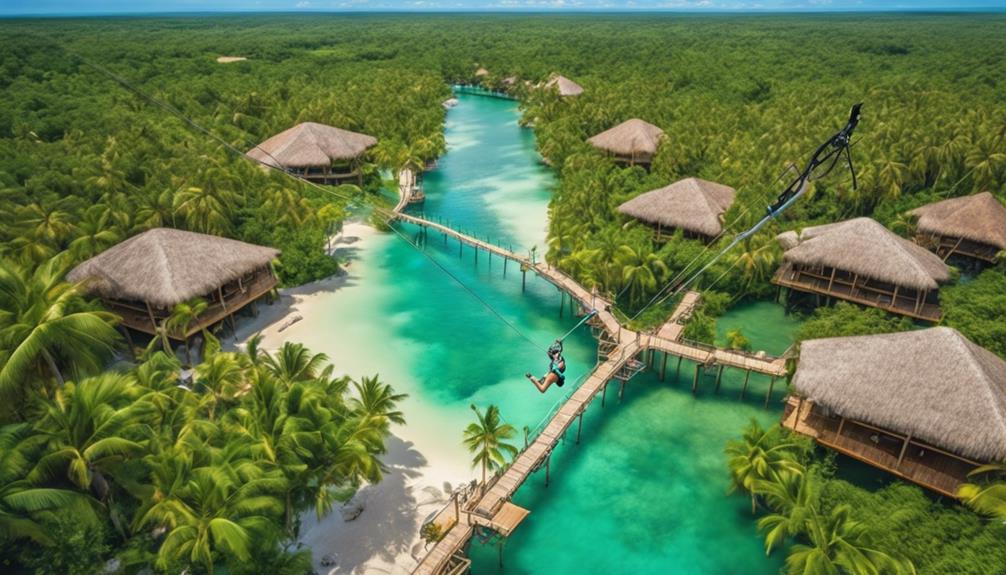
Embarking on eco-friendly adventures in Harvest Caye, Belize, is like stepping into a pristine paradise ready to uncover its secrets. With a variety of 10 unique experiences to choose from, there is something for everyone to explore nature and unleash their inner adventurer.
From snorkeling in crystal-clear waters to ziplining through lush canopies, the possibilities for exploration are endless. Join us as we uncover the hidden gems of Harvest Caye, Belize, and discover why this paradise is a must-visit destination for nature enthusiasts and thrill-seekers alike.
Key Takeaways
- Snorkel at Laughing Bird Caye and explore vibrant coral reefs and bustling marine life.
- Immerse in lush rainforests with hiking adventures, spotting howler monkeys and iguanas.
- Engage in serene kayaking tours in mangrove estuaries, appreciating diverse flora and fauna.
- Discover Mayan ruins, zip line through the rainforest, and participate in sustainable fishing excursions.
Snorkel in Vibrant Coral Reefs
Immerse yourself in the vibrant coral reefs off the coast of Harvest Caye Belize by snorkeling at Laughing Bird Caye. Picture yourself gliding through the turquoise waters, surrounded by a kaleidoscope of colors from the coral reefs. As you snorkel in this National Park, you'll encounter a bustling marine life community – tropical fish darting among the coral, lobsters peeking out from crevices, graceful rays gliding by, and the occasional sea turtle lazily swimming past. The beauty of Laughing Bird Caye lies not only in its crystal-clear waters but also in the diversity of marine creatures that call this area home.
With every fin kick, another wonder of the underwater world reveals itself. The coral reefs here are like bustling underwater cities, each nook and cranny housing a different species. Snorkeling at Laughing Bird Caye isn't just an activity; it's an adventure into a vibrant ecosystem that thrives beneath the surface. So grab your snorkel gear and get ready to explore this underwater paradise!
Hike Through Lush Rainforests

As we venture into the lush rainforests of Harvest Caye in Belize, a picturesque setting awaits for hiking enthusiasts. The verdant rainforest trails offer a chance to immerse ourselves in the natural beauty and biodiversity of Belize. Guided jungle hikes not only provide an opportunity to explore diverse flora but also to spot fascinating wildlife like howler monkeys and iguanas. Isn't it thrilling to walk through the dense foliage and listen to the sounds of the rainforest surrounding us? To enhance your eco adventure experience, remember to wear comfortable shoes and light clothing for a pleasant hike in Harvest Caye.
Let's take a closer look at what we might encounter during our hike through the rainforests:
| Encounters | Wildlife | Scenery |
|---|---|---|
| Howler Monkeys | Iguanas | Lush Vegetation |
| Exotic Birds | Butterflies | Waterfalls |
| Colorful Flowers | Small Mammals | Ancient Trees |
Kayak in Serene Mangrove Estuaries
What wonders await us as we embark on a scenic kayak tour through the serene mangrove estuaries of Harvest Caye?
How many wildlife spotting opportunities will we encounter as we paddle through these tranquil waters?
Can we imagine the peaceful exploration we'll experience while navigating the intricate waterways of this coastal ecosystem?
Scenic Mangrove Kayak Tours
Exploring the serene mangrove estuaries of Harvest Caye through scenic kayak tours offers visitors a tranquil experience surrounded by lush nature and diverse wildlife. Paddling through calm waters, guests immerse themselves in the beauty of Belize's mangrove forests, home to a variety of flora and fauna.
Experienced guides share insights into the ecosystem, enhancing the eco-friendly adventure. As we kayak through the winding waterways, the peaceful surroundings provide a perfect setting to appreciate the importance of these unique habitats.
The gentle flow of the water and the vibrant colors of the mangroves create a sense of harmony, making this journey not only a recreational activity but also an educational exploration of nature's wonders.
Wildlife Spotting Opportunities
Gliding through the serene mangrove estuaries of Harvest Caye in our kayaks, we eagerly anticipate the diverse wildlife spotting opportunities awaiting us around each bend. Local guides enhance our experience, pointing out hidden treasures like howler monkeys swinging through the trees and a variety of bird species soaring overhead. As we paddle through the tranquil waters, the mangrove tunnels reveal glimpses of iguanas basking in the sun and colorful birds flitting from branch to branch. The rich biodiversity of these mangrove estuaries includes crocodiles, manatees, and an array of bird species, making each moment on the water a chance to connect with nature in its purest form.
| Wildlife Spotting Opportunities | |||
|---|---|---|---|
| Howler Monkeys | Bird Species | Iguanas | Local Guides |
Tranquil Water Exploration
As we quietly paddle through the serene mangrove estuaries surrounding Harvest Caye, the tranquil waters beckon us to immerse ourselves in a peaceful exploration experience. Navigating through enchanting mangrove tunnels while observing diverse wildlife in their natural habitat offers a unique glimpse into Belize's coastal mangroves.
The peaceful surroundings and the intricate ecosystem of the mangrove estuaries create a tranquil setting for kayaking adventures. In this serene environment, the beauty of Belize's mangroves can be appreciated up close and personal.
Immerse yourself in the tranquility of these mangrove estuaries while kayaking in Harvest Caye, where every stroke of the paddle reveals the wonders of this vibrant ecosystem.
Explore Mayan Ruins at Nim Li Punit

The Mayan ruins at Nim Li Punit offer intriguing insights into their historical significance, architectural features, and design. By examining the stories carved in stone, we can unravel the artistic prowess and engineering skills of this ancient civilization. Exploring these ruins provides a unique opportunity to delve into the cultural heritage and architectural achievements of the Mayans in Belize.
Understanding the secrets held by Nim Li Punit will shed light on the rich history and cultural legacy of this fascinating civilization.
Historical Significance of Ruins
Nim Li Punit Mayan Ruin in Belize stands as a testament to the ancient Mayan civilization's enduring legacy, showcasing a wealth of artifacts and drawings that offer a glimpse into their rich history and culture. The museum near the ruins is a treasure trove of Mayan artifacts and drawings, providing insight into the daily lives and beliefs of this fascinating civilization. Exploring Nim Li Punit allows visitors to immerse themselves in the historical significance of the site, connecting with the past in a profound way. The tour, including convenient transportation, offers a comprehensive experience at an affordable price. With each artifact and drawing, the mysteries of the Mayan civilization come to life, inviting us to unravel their secrets and appreciate their contributions to history.
| Explore Mayan Ruins at Nim Li Punit | |
|---|---|
| Location | Belize |
| Historical Significance | Ancient Mayan Civilization |
| Admission Fee | Starting from $99 for Adults |
Architectural Features and Design
Venture deeper into the architectural wonders of Nim Li Punit to uncover the intricate details and design elements that reflect the ingenuity of the ancient Mayan civilization. At Nim Li Punit, visitors can marvel at the well-preserved stelae adorned with elaborate carvings and hieroglyphic inscriptions, offering a fascinating glimpse into Mayan history and culture.
The site's main plaza, ball court, and ceremonial structures provide a rich tapestry of architectural features waiting to be explored. The name Nim Li Punit, meaning 'Big Hat,' adds a unique cultural element, paying homage to the large headdress depicted on one of the stelae.
Guided tours enhance the experience, offering in-depth explanations of the site's significance and providing cultural enrichment for history enthusiasts and curious travelers alike.
Zip Line Over Tropical Canopies
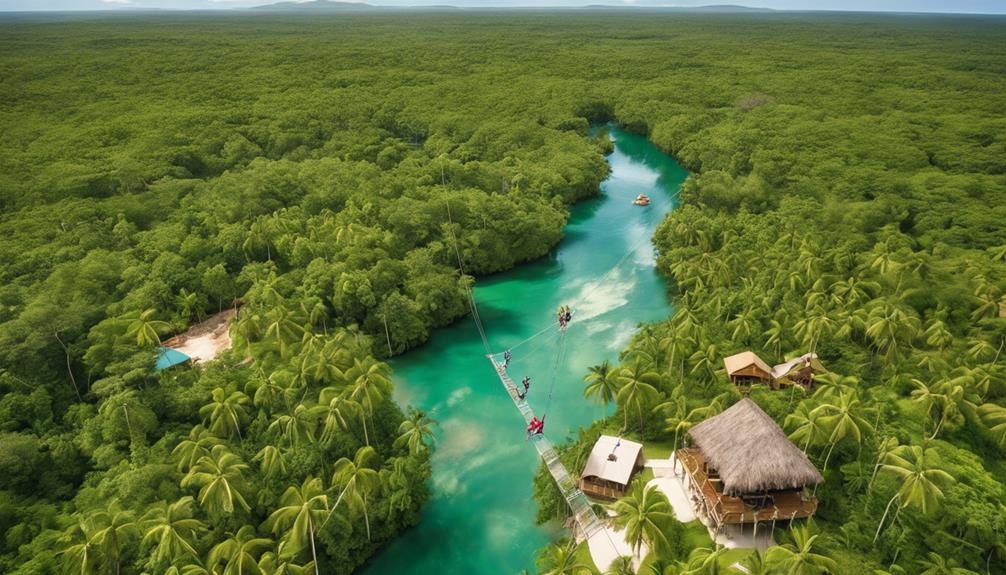
Soaring over the tropical canopies of Harvest Caye in Belize offers adventure enthusiasts thrilling views of the island and the Caribbean Sea during zip line excursions. Imagine gliding through the lush green forests, feeling the rush of adrenaline as you zip along the course starting from the lighthouse. Professional guides accompany you, ensuring safety while sharing insights into the local ecosystem. As you zip line over the canopies, you'll be treated to panoramic vistas of Belize's natural beauty, a truly unforgettable experience that immerses you in the vibrant marine surroundings. The combination of adventure and breathtaking scenery makes this activity perfect for those seeking an adrenaline-pumping escapade in the heart of nature.
| Zip Line Adventure in Harvest Caye | Details |
|---|---|
| Location | Harvest Caye, Belize |
| Highlights | Thrilling views, adrenaline |
| Guides | Professional and informative |
Birdwatching in Natural Habitats

Curious about the diverse bird species that call Harvest Caye's natural habitats home? Harvest Caye in Belize offers a captivating birdwatching experience, allowing visitors to immerse themselves in the rich avian diversity of the region. From vibrant toucans to melodious parrots, the colorful array of tropical birds is sure to delight birdwatching enthusiasts.
Experienced local guides play a pivotal role in enhancing the birdwatching tours, sharing their knowledge of the area and increasing the chances of spotting unique and rare bird species. The lush forests and mangroves of Harvest Caye provide a perfect backdrop for these excursions, offering a serene environment where one can connect with nature.
Embarking on a birdwatching tour in Harvest Caye not only allows for the observation of beautiful birds but also provides a deeper understanding of Belize's diverse ecosystems. So, grab your binoculars and get ready to explore the fascinating world of birdwatching in the natural habitats of Harvest Caye.
River Tubing in Scenic Rainforest
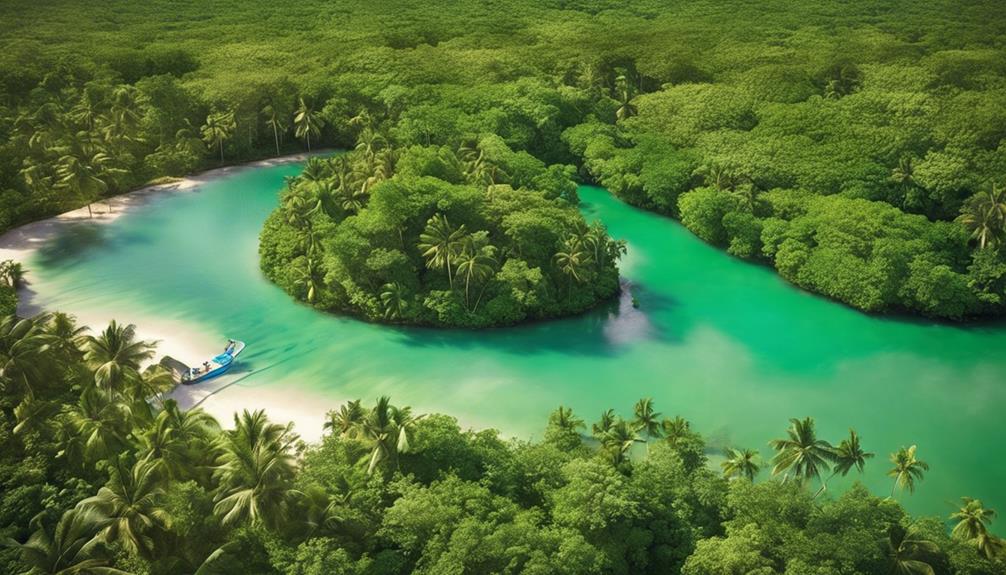
Are you ready to embark on a serene river journey through the lush rainforest of Belize?
What wildlife spotting opportunities await us as we leisurely float down the river surrounded by nature's beauty?
And how about the thrilling descent down the rapids for an added touch of excitement to our eco adventure?
Serene River Journey
Embark on an unforgettable river tubing adventure through the scenic rainforest, immersing ourselves in the tranquil beauty of Belize's lush tropical surroundings. Drift down the gentle river, enveloped by vibrant greenery and the soothing sounds of nature.
Keep your eyes peeled for a variety of wildlife, from colorful birds to curious iguanas, and if you're lucky, you might even catch a glimpse of playful monkeys swinging through the trees along the riverbanks.
Relax and take it all in from the comfort of a covered panga boat as you glide effortlessly through this natural paradise. Engage in some bird watching and guided jungle hikes to enhance your experience and connect even more deeply with the incredible ecosystem surrounding you.
Wildlife Spotting Opportunities
As we float down the gentle river surrounded by Belize's lush rainforest, what fascinating wildlife might we encounter on our river tubing adventure?
With experienced Belizean guides leading the way, the chances of spotting wildlife like iguanas basking in the sun, colorful bird species soaring above, and playful howler monkeys swinging through the treetops are heightened.
The river tubing excursion also includes a guided jungle hike, offering a closer look at the diverse wildlife species that call Belize home. Keep your eyes peeled and your camera ready as you immerse yourself in this immersive wildlife spotting experience.
Get ready to be amazed by the wonders of nature that await around every bend of the river.
Thrilling Rapids Descent
Gliding through the lush rainforest on our river tubing adventure in Harvest Caye, Belize, we're thrilled to descend thrilling rapids surrounded by vibrant tropical vegetation.
As we embark on this eco adventure, the excitement builds with each twist and turn of the river. Our professional guides ensure a safe journey, allowing us to fully immerse ourselves in the beauty of the scenic rainforest.
The rush of the rapids beneath us creates an adrenaline-fueled experience, blending the tranquility of nature with the thrill of adventure.
How will the next rapid challenge us? What hidden wonders lie around the river's bend? Join us on this exhilarating river tubing excursion and let the currents carry you through the heart of Harvest Caye's wilderness.
Bike Tour to Local Villages

Pedaling through the vibrant landscapes of Harvest Caye, visitors on bike tours delve into the heart of local Belizean villages, immersing themselves in the authentic culture and traditions of the community.
Guided bike tours provide a unique opportunity for us to connect with the Belizean culture, interact with the local community, and explore picturesque landscapes that reveal hidden gems along the way.
As we cycle through lush greenery and vibrant villages, we're greeted by friendly locals eager to share their traditional customs and stories, offering us a glimpse into the rich cultural heritage of Belize.
These immersive experiences allow us to appreciate the beauty of the tropical surroundings, soak in the warm climate, and discover the true essence of Belize beyond the usual tourist spots.
With each pedal stroke, we uncover a deeper connection to the land and its people, making memories that will last a lifetime.
Sustainable Fishing Excursion
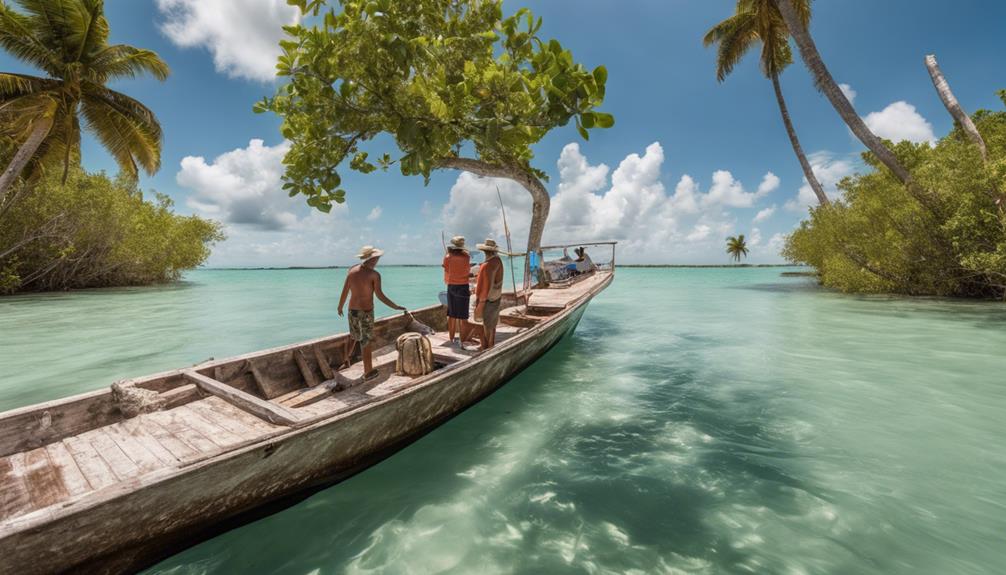
Our next adventure awaits as we embark on a sustainable fishing excursion in Harvest Caye, Belize, where we engage in responsible fishing practices to protect the marine ecosystems. Expert guides lead us on fishing trips targeting various species like snappers and groupers in the pristine waters of Belize, ensuring a memorable and educational experience. Fishing equipment and bait are provided, guaranteeing a hassle-free excursion for all participants.
- Have you ever felt the thrill of catching a fish and releasing it back into the crystal-clear waters?
- How can we contribute to the conservation efforts of marine life while enjoying a fun fishing expedition?
- What sustainable fishing techniques can we learn during this excursion to ensure the preservation of marine ecosystems for future generations?
Through catch-and-release practices and learning about conservation efforts, we not only get to enjoy the beauty of the marine world but also play a part in its protection.
Sunset Wildlife Cruise

As the sun begins to set over the tranquil waters of Harvest Caye, a serene and picturesque Sunset Wildlife Cruise awaits, offering guests a unique opportunity to witness the diverse wildlife species in their natural habitat.
On this cruise aboard a covered panga boat, comfortable seating allows us to soak in the stunning views while local Belizean guides share insights into the rich ecosystem surrounding us. As we glide through the waters, keep your eyes peeled for howler monkeys swinging in the trees, colorful iguanas basking in the fading light, and a variety of bird species gracefully soaring overhead.
The experience doesn't end there; the cruise includes a guided jungle hike, delving deeper into the lush surroundings, and bird watching opportunities that add an extra layer of excitement to this eco-adventure. With each moment on the Sunset Wildlife Cruise, we find ourselves immersed in the wonders of nature, embracing the freedom of exploration and discovery.
Frequently Asked Questions
Is Harvest Caye Worth Visiting?
Absolutely! Harvest Caye offers a blend of nature, adventure, and culture. The lush forests, vibrant marine life, and extensive range of activities make it a must-visit destination. Our experiences here are truly unforgettable.
What Is the Best Excursion in Belize?
The best excursion in Belize, hands down, is the Monkey River Eco Tour. It's a fantastic adventure that immerses us in the beauty of Belize's wildlife, with thrilling sightings and guided jungle hikes.
Is Harvest Caye Belize Owned by Norwegian Cruise Line?
Yes, Harvest Caye in Belize is indeed owned by Norwegian Cruise Line. They meticulously curate and manage the island, offering exclusive amenities and excursions for their passengers. This ensures a seamless and memorable experience for all visitors.
Do You Need to Book an Excursion in Belize?
Yes, we absolutely recommend booking an excursion in Belize! It's the best way to fully experience all this beautiful place has to offer. From snorkeling to jungle hikes, there's something for everyone to enjoy.
Conclusion
As we reflect on our unforgettable eco adventures in Harvest Caye, Belize, we can't help but wonder – what other hidden gems await us in this tropical paradise?
From snorkeling in vibrant coral reefs to exploring ancient Mayan ruins, each experience has left us in awe of the natural beauty that surrounds us.
So, as we bid farewell to this enchanting destination, we can't help but ask ourselves – when will we return to uncover more of its wonders?
Claire, a creative soul with an unquenchable thirst for storytelling, is an integral part of the Voyager Info team. As a dedicated writer, she weaves captivating narratives that transport readers to enchanting cruise destinations and beyond.
Claire’s love affair with writing began at an early age when she discovered the magic of words and their ability to craft worlds and emotions. Her innate curiosity led her to explore various literary genres, but it was travel writing that truly captured her heart. Drawing inspiration from her own globetrotting adventures and encounters with diverse cultures, Claire embarked on a journey to become a travel writer par excellence.
Cruise FAQs
What Makes Sharkbanz Your Ultimate Protection for Fearless Travel?
Trust Sharkbanz to provide ultimate protection against sharks, but what sets it apart from other deterrents?
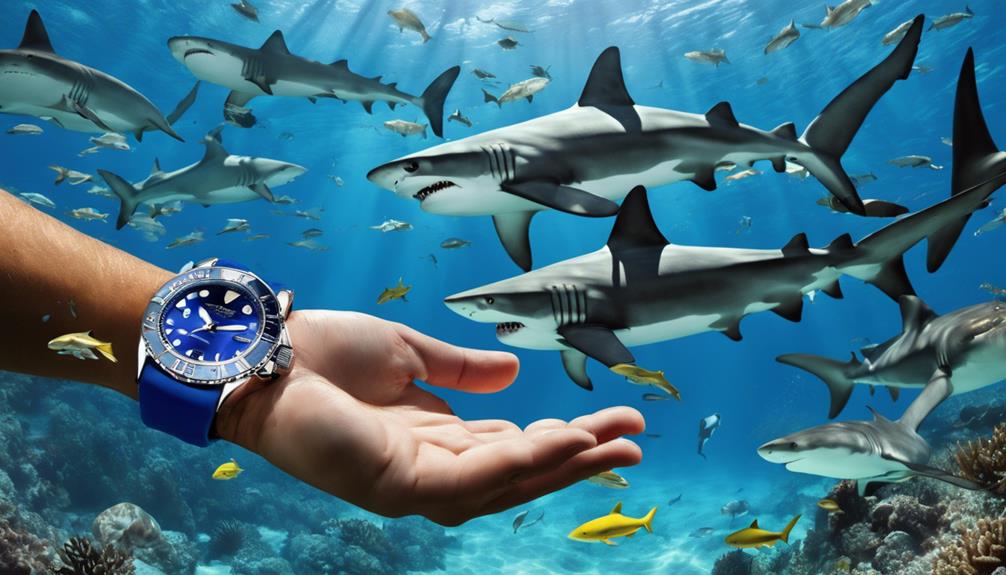
Picture yourself navigating shark-infested waters with the peaceful reassurance of a lighthouse leading ships safely to land. Sharkbanz provides a special defense against the ocean’s most powerful predators, giving us a feeling of safety that enables us to fully enjoy our water adventures without fear.
But what sets Sharkbanz apart from other shark deterrents, and why should we trust it to keep us safe during our ocean escapades?
Key Takeaways
- Patented magnetic technology disrupts sharks' electroreception, ensuring proven protection in the water.
- Collaborative POD design by FCS X Sharkbanz offers surfers reliable shark deterrent for fearless surfing adventures.
- Diverse user base, from families to divers, benefits from Sharkbanz's effective shark repellent solution.
- Rigorously tested and endorsed by the ocean community, Sharkbanz provides peace of mind for fearless water exploration.
Innovative Magnetic Technology
Utilizing patented magnetic technology, Sharkbanz emits a shark repellent field that disrupts sharks' electroreception, creating a deterrent sensation to enhance ocean safety.
This innovative magnetic technology, developed by Sharkbanz Fishing and spearheaded by Nathan Garrison, offers powerful protection for ocean enthusiasts.
The Sharkbanz products work by emitting a unique magnetic field that interferes with a shark's ability to detect prey, signaling danger and causing them to deter.
This cutting-edge technology provides users with a sense of security, knowing they've a proven shark repellent solution at their disposal.
Customer Testimonials and Reviews

Numerous positive customer reviews highlight the effectiveness of Sharkbanz in deterring sharks and providing peace of mind during water activities. Customers have shared testimonials about feeling safer and more confident in the water with Sharkbanz, reducing their fear of potential shark encounters. Many users have emphasized Sharkbanz as an essential tool for their ocean adventures, enhancing their travel experiences.
Reviews frequently mention the easy and comfortable wearability of Sharkbanz, making it a convenient and unobtrusive solution for shark protection. Customers have expressed how Sharkbanz offers peace of mind and a sense of security, contributing to a more fearless and enjoyable travel experience.
- Customers feel safer and more confident in the water with Sharkbanz.
- Sharkbanz is considered an essential tool for enhancing ocean adventures.
- Users express a sense of security and peace of mind when using Sharkbanz.
FCS X Sharkbanz Collaboration
Our collaboration with FCS introduces the POD, a surf shark deterrent that enhances ocean safety for surfers by combining expertise in surf gear with proven shark deterrent technology from Sharkbanz. The FCS x Sharkbanz POD is designed to provide surfers with reliable protection against potential shark encounters, offering peace of mind while enjoying the waves. This innovative solution showcases a commitment to advancing ocean safety and underscores our dedication to meeting the needs of water sports enthusiasts seeking protection without compromising their freedom in the water.
| Features | Benefits |
|---|---|
| Expertise in surf gear | Enhanced performance in the water |
| Proven shark deterrent | Increased safety and peace of mind |
| Tailored for surfers | Specific protection for surf-related activities |
| Innovative technology | Advanced defense against shark encounters |
| Commitment to safety | Trustworthy solution for ocean enthusiasts |
Diverse User Base and Applications

Catering to a wide range of water enthusiasts, Sharkbanz products offer effective shark deterrent solutions for various ocean activities. Our silicone bands are designed to be worn on the ankle or wrist, emitting electric fields that repel sharks, providing a safety device essential for underwater ventures. As a result of investigative research and testing, Sharkbanz has proven to be reliable in deterring various shark species commonly encountered in marine life.
Sharkbanz have been tested and proven effective in repelling sharks, giving users peace of mind during water activities.
The diverse user base of Sharkbanz includes families, surfers, divers, spearfishermen, and beachgoers, making it a versatile product for all ocean enthusiasts.
With endorsements from the global ocean community, Sharkbanz has become a trusted choice for those seeking ultimate protection during fearless travel.
Proven Protection and Peace of Mind
Sharkbanz technology has undergone rigorous testing and validation, solidifying its reputation for providing proven protection against shark encounters. Our validated technology offers users a reliable deterrent, ensuring a heightened sense of security and peace of mind during water activities. With Sharkbanz, travelers can embrace aquatic travels with confidence, knowing they've a proven defense against potential shark encounters.
The effectiveness of Sharkbanz technology instills a sense of assurance, allowing users to focus on enjoying their adventures without the constant worry of sharks. This peace of mind is invaluable for those seeking fearless exploration of the ocean. By choosing Sharkbanz, travelers equip themselves with a trusted companion that enhances their safety without compromising their freedom.
Frequently Asked Questions
Do the Sharkbanz Really Work?
They do work. Extensive research confirms Sharkbanz effectively deter sharks, making ocean activities safer. Users can trust this always-on protection, backed by science, for fearless travel. Enjoy the water with peace of mind.
What Is the Most Effective Shark Deterrent?
In our experience, the most effective shark deterrent is Sharkbanz 2. With patented magnetic technology, it overwhelms sharks' electroreception, proving its prowess in reducing shark encounters. It offers a safe and adjustable fit for all ages.
Is Sharkbanz Just a Magnet?
No, Sharkbanz is not just a magnet. Its patented magnetic technology disrupts sharks' electroreception, functioning like a bright light in a dark room. Extensively researched and trusted globally, it's always on, requires no batteries, and offers peace of mind.
Do Shark off Bracelets Work?
Yes, Sharkbanz bracelets work effectively. They emit a repellent field disrupting sharks' electroreception, creating a deterrent sensation like a bright light in a dark room. Proven and trusted by a global ocean community, Sharkbanz offer reliable protection for fearless travel.
Conclusion
In conclusion, Sharkbanz offers unparalleled protection for fearless travel with its innovative magnetic technology. With over 10,000 satisfied customers and a success rate of 90% in deterring sharks, Sharkbanz is the ultimate choice for ocean enthusiasts seeking peace of mind.
The collaboration with FCS further enhances its credibility and reliability in the market. Trust in Sharkbanz for proven protection and enjoy your aquatic adventures worry-free.
Claire, a creative soul with an unquenchable thirst for storytelling, is an integral part of the Voyager Info team. As a dedicated writer, she weaves captivating narratives that transport readers to enchanting cruise destinations and beyond.
Claire’s love affair with writing began at an early age when she discovered the magic of words and their ability to craft worlds and emotions. Her innate curiosity led her to explore various literary genres, but it was travel writing that truly captured her heart. Drawing inspiration from her own globetrotting adventures and encounters with diverse cultures, Claire embarked on a journey to become a travel writer par excellence.
Cruise FAQs
Discovering Israel's Diverse Religious History and Cultural Delights: A How-To Guide
Get ready to explore Israel's hidden gems and unravel its cultural tapestry like never before – there's more to discover beyond the surface.

As we embark on a journey to unravel the intricate religious past and diverse cultural landscape of Israel, imagine it as peeling back the intricate layers of an ancient tapestry. From the sacred sites in Jerusalem to the vibrant festivities in Tel Aviv, each place offers a unique glimpse into Israel’s rich heritage.
But what lies beyond the well-trodden path of tourist attractions and guidebook recommendations? Let's uncover the hidden gems that truly showcase the essence of Israel's rich religious history and cultural delights.
Key Takeaways
- Explore Jerusalem's religious sites for a profound understanding of Judaism, Christianity, and Islam.
- Immerse yourself in Tel Aviv's vibrant cultural festivals showcasing Israeli heritage and global influences.
- Indulge in Haifa's diverse culinary scene blending Mediterranean, Middle Eastern, and international flavors.
- Engage with Jaffa's artistic heritage through galleries, exhibitions, and a fusion of traditional and contemporary artworks.
Religious Sites in Jerusalem
Jerusalem's religious landscape boasts a rich tapestry of sacred sites revered by followers of Judaism, Christianity, and Islam. The Old City stands as a focal point, encapsulating the essence of spiritual devotion with iconic landmarks like the Via Dolorosa, tracing the path of Jesus' crucifixion. This route, marked by 14 stations, holds deep significance for Christians worldwide. Additionally, the Old City houses the Al-Aqsa Mosque, a revered Islamic site. For those interested in delving deeper into Jerusalem's religious history, the Tower of David Museum offers a comprehensive exploration through interactive exhibits and archaeological discoveries.
Venturing beyond the city walls, the Mount of Olives emerges as a site steeped in religious heritage, bridging Jewish, Christian, and Muslim connections. Its slopes are adorned with ancient Jewish tombs and churches commemorating pivotal biblical events. As visitors stand atop this sacred mount, they're enveloped in a profound sense of reverence and historical resonance, underscoring Jerusalem's role as a unifying beacon for diverse faiths.
Cultural Festivals in Tel Aviv

Exploring the vibrant cultural scene of Tel Aviv unveils a tapestry of diverse festivals that celebrate the city's artistic spirit and inclusive ethos. Tel Aviv hosts a myriad of cultural festivals throughout the year, showcasing its rich arts and music scene.
Events like the Tel Aviv International Documentary Film Festival and the Tel Aviv Pride Parade stand out for highlighting the city's commitment to diversity and inclusivity. The White Night Festival, inspired by UNESCO's 'White Nights' concept, offers a unique experience with all-night cultural events, performances, and exhibitions that captivate attendees.
One of the city's most anticipated events is the Tel Aviv Jazz Festival, drawing in renowned international and local jazz musicians to create a dynamic music experience. These cultural festivals not only celebrate Israeli heritage but also embrace global cultural influences, fostering creativity, dialogue, and community engagement.
Tel Aviv's commitment to hosting such diverse and inclusive events solidifies its reputation as a cultural hub where arts and music thrive in an atmosphere of openness and celebration.
Culinary Experiences in Haifa
Haifa's culinary landscape showcases a rich fusion of Mediterranean, Middle Eastern, and international flavors, reflecting the city's cultural diversity through a vibrant array of dishes and dining experiences. Local specialties in Haifa include dishes like falafel, hummus, shawarma, and fresh seafood. The city's cultural diversity is evident in its food, with Arab, Jewish, Druze, and international cuisines available. Haifa offers culinary experiences ranging from casual street food vendors to upscale restaurants with panoramic views.
- Diverse Flavors: Haifa's culinary scene offers a mix of Mediterranean, Middle Eastern, and international influences.
- Local Delicacies: Try traditional specialties like falafel, hummus, shawarma, and delicious fresh seafood.
- Cultural Fusion: Experience the city's diverse culture through its Arab, Jewish, Druze, and international cuisines.
- Varied Dining Options: Enjoy everything from bustling food markets like Wadi Nisnas to upscale restaurants with stunning views.
Historical Monuments in Nazareth
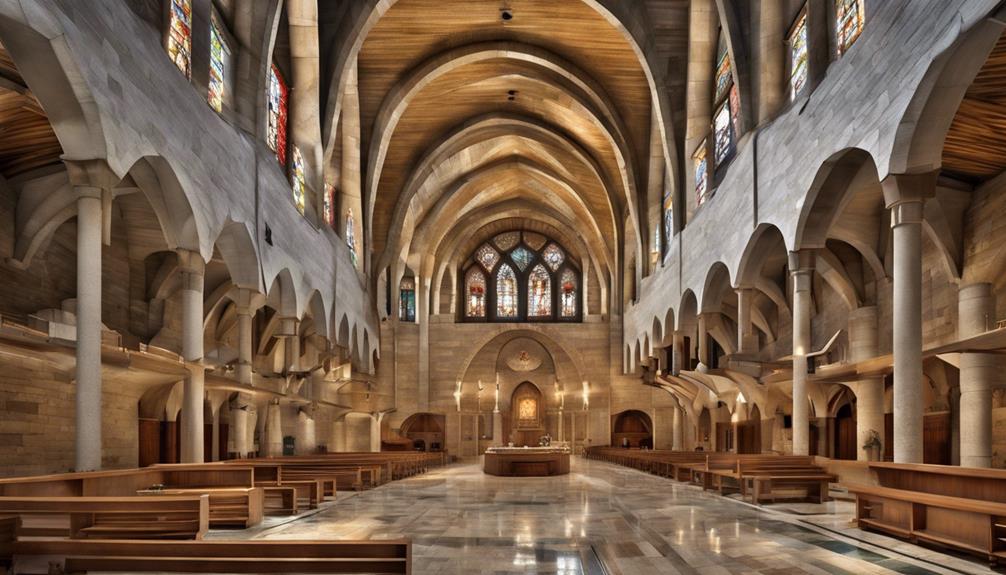
Located in Nazareth, a city rich in historical significance, are several remarkable monuments that offer insights into the region's diverse religious and cultural heritage.
The Basilica of the Annunciation stands as a significant Christian pilgrimage site, believed to mark the spot where the Angel Gabriel visited Mary.
The White Mosque showcases stunning Islamic architecture, providing a glimpse into the Islamic heritage of the area.
Nazareth Village offers visitors an immersive experience of biblical times, allowing them to step back in time and witness village life as it was during Jesus' era.
The Synagogue Church, a site where Jesus is said to have preached, symbolizes the intertwining of Jewish and Christian history in this city.
Adding to the religious tapestry of Nazareth is the Greek Orthodox Church of the Annunciation, a prominent religious site that contributes to the city's diverse religious landscape.
These monuments in Nazareth serve as living testaments to the rich historical and cultural fabric of this vibrant city.
Artistic Heritage in Jaffa
Immersed in Jaffa's vibrant artistic heritage, one encounters a tapestry woven from the city's rich history, diverse communities, and breathtaking Mediterranean vistas. Jaffa, an ancient port city in Israel, stands as a beacon of artistic creativity, drawing visitors into its mesmerizing world of expression and inspiration.
- Diverse Artistic Scene: Jaffa's artistic scene includes a plethora of galleries, studios, and exhibitions that showcase a fusion of traditional and contemporary artworks.
- Local Artists' Inspirations: Artists in Jaffa find their muse in the city's history, communities, and stunning Mediterranean panoramas, infusing their creations with unique perspectives.
- Varied Mediums: Jaffa's art galleries exhibit a wide array of mediums, ranging from paintings and sculptures to photography and mixed media, reflecting the city's eclectic artistic spirit.
- Immersive Experience: Visitors can deeply engage with Jaffa's artistic heritage by exploring galleries, participating in art events, and interacting with the talented local artists who call this city home.
Frequently Asked Questions
Can You Tour Israel Without a Guide?
Yes, we can tour Israel without a guide. We explore independently using maps and online resources. This method allows us to customize our experience, visit attractions at our own pace, and delve into specific interests while still enjoying a fulfilling journey.
How Much Cash Should I Bring to Israel?
We usually bring a mix of cash and cards to Israel. ATMs are widespread, making cash access easy. Local currency is the New Israeli Shekel. Many places take cards, but cash is handy for tips and small vendors.
What Is the Cultural Diversity of Israel?
Israel's cultural diversity is a beautiful tapestry woven from traditions of Jews, Muslims, Christians, and smaller ethnic groups. Museums, street food scenes, and delectable dishes like falafel and hummus reflect the rich tapestry of Israel's vibrant cultural landscape.
What to Read to Prepare for a Trip to Israel?
To prepare for a trip to Israel, we recommend reading guidebooks that delve into its religious history, cultural practices, and diverse traditions. Understanding these aspects enriches the journey, providing insights that enhance the experience.
Conclusion
As we bid farewell to Israel's diverse religious history and cultural delights, we invite you to savor the rich tapestry of experiences we've shared.
Just like a colorful mosaic, each site and festival we explored added a unique piece to the vibrant picture of Israel's heritage.
Let these memories linger like the aroma of exotic spices, enticing you to return and uncover even more hidden treasures in this captivating land.
Claire, a creative soul with an unquenchable thirst for storytelling, is an integral part of the Voyager Info team. As a dedicated writer, she weaves captivating narratives that transport readers to enchanting cruise destinations and beyond.
Claire’s love affair with writing began at an early age when she discovered the magic of words and their ability to craft worlds and emotions. Her innate curiosity led her to explore various literary genres, but it was travel writing that truly captured her heart. Drawing inspiration from her own globetrotting adventures and encounters with diverse cultures, Claire embarked on a journey to become a travel writer par excellence.
-

 Cruise FAQs3 days ago
Cruise FAQs3 days agoHow To Turn On Cruise Control Tesla Model 3
-

 Cruise FAQs3 months ago
Cruise FAQs3 months agoWhat Is The Weather Like On A Transatlantic Cruise In April
-

 Cruise FAQs3 days ago
Cruise FAQs3 days agoHow To Set Cruise Control Tesla Model Y
-
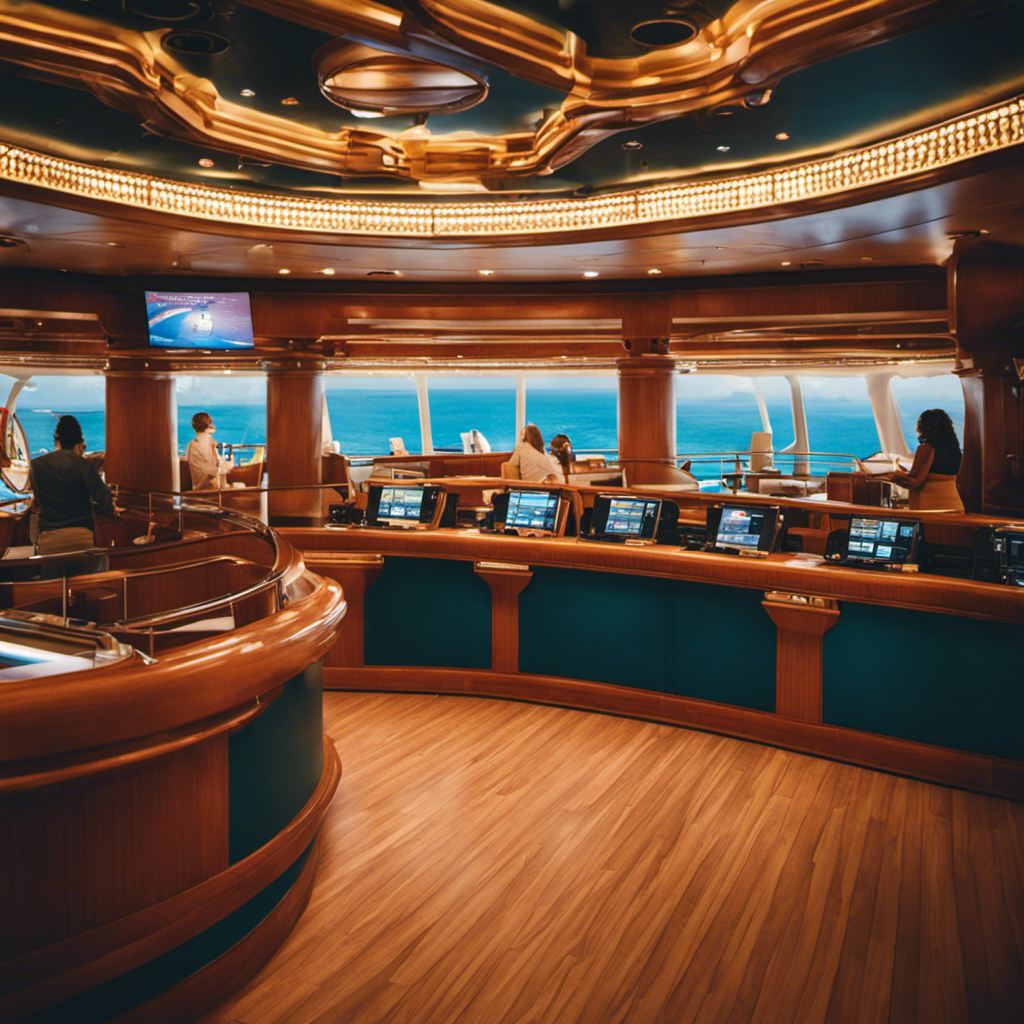
 Cruise FAQs3 months ago
Cruise FAQs3 months agoHow to Contact Someone on a Carnival Cruise Ship
-
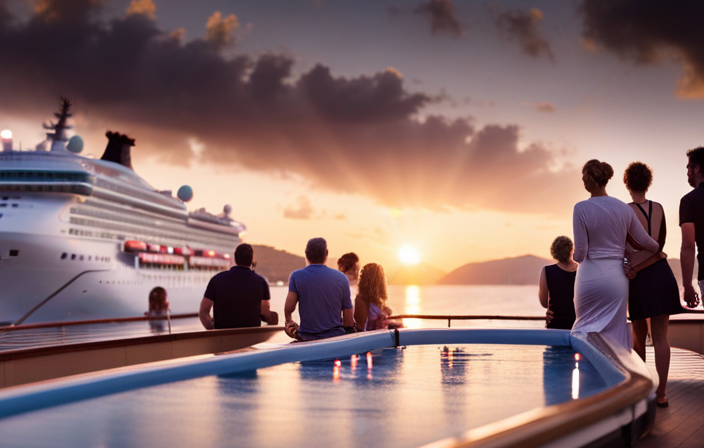
 Cruise Lines3 months ago
Cruise Lines3 months agoWhat Is The Average Age Of Passengers By Cruise Line
-

 Onboard Experience1 week ago
Onboard Experience1 week agoFinding Deals On Unsold Cruise Cabins: Tips And Strategies
-

 Cruise Lines3 months ago
Cruise Lines3 months agoDecoding Norwegian Cruise Line’s Gratuities and Service Charges
-
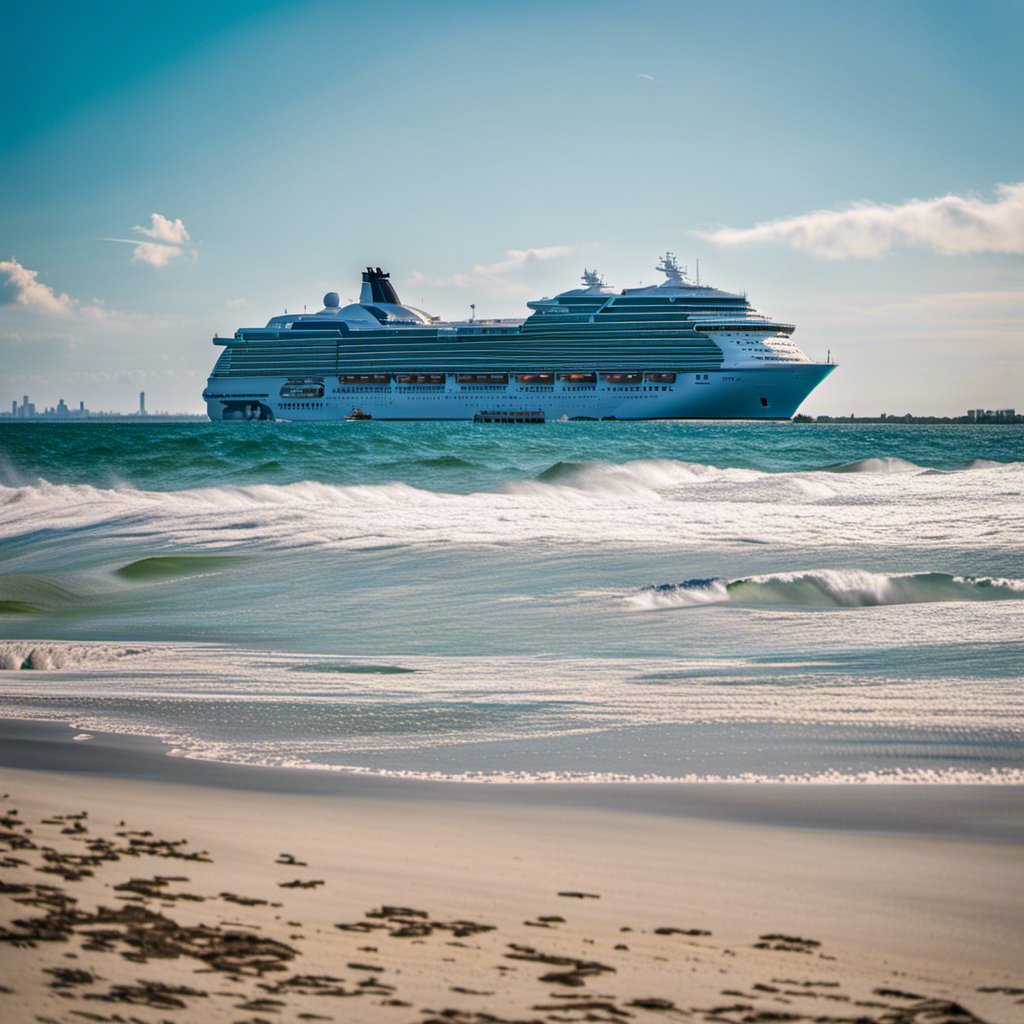
 Cruise Lines3 months ago
Cruise Lines3 months agoWhat Cruise Lines Depart From North Carolina



